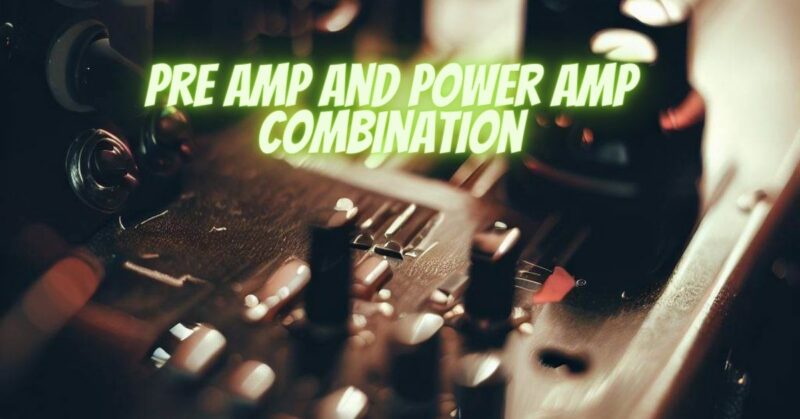In the world of audio amplification, the combination of a preamp and power amp is a powerful partnership that plays a pivotal role in shaping and amplifying the audio signal. Each component serves a distinct purpose, with the preamp preparing the signal for amplification, and the power amp delivering the final punch of amplified sound to the speakers. In this article, we will explore the significance of the preamp and power amp combination, their roles in the audio chain, and the benefits of using separate units for audiophiles and music enthusiasts.
Understanding the Preamp and Power Amp:
A preamp, short for “preamplifier,” is the initial stage of the amplification process. Its primary function is to take the weak audio signal from the source (e.g., turntable, CD player, or streaming device) and bring it to a higher level suitable for amplification. The preamp is responsible for adjusting the gain, applying equalization (if applicable), and managing other audio enhancements before sending the signal to the power amp.
A power amp, also known as a “power amplifier,” is the second stage of amplification. It takes the signal from the preamp and significantly increases its power to drive the speakers. The power amp’s job is to provide the necessary wattage and current to produce the desired volume and dynamics for an immersive listening experience.
Benefits of Using Separate Preamp and Power Amp:
- Sonic Customization: Using separate preamp and power amp units allows for greater sonic customization. Audiophiles can choose preamps with specific tonal characteristics or features that complement their audio preferences. Additionally, they can pair different power amps to achieve the desired power output and sonic signature for their speakers.
- Reduced Signal Interference: Separate units reduce the likelihood of signal interference, resulting in cleaner and more transparent audio reproduction. By keeping the preamplification and power amplification stages isolated, potential noise and distortion are minimized, leading to improved sound quality.
- Upgrade Flexibility: With separate components, it is easier to upgrade specific parts of the audio chain. Audiophiles can upgrade the preamp or power amp individually, keeping the other component if it still meets their requirements. This flexibility allows for gradual improvements over time without the need to replace the entire system.
- Enhanced Component Matching: Audiophiles can carefully select and match preamps and power amps from different manufacturers to find the perfect synergy that suits their audio preferences. This process of component matching can lead to a more cohesive and harmonious audio setup.
The preamp and power amp combination forms a critical partnership in the audio amplification chain, preparing and delivering the audio signal with precision and power. The preamp’s role in signal preparation and the power amp’s task of amplification work together to create a seamless audio experience. Using separate preamp and power amp units offers audiophiles greater sonic customization, reduced signal interference, upgrade flexibility, and the opportunity for enhanced component matching. With this powerful combination, music enthusiasts can achieve sonic harmony and elevate their listening experience to new heights, embracing the full potential of their audio systems. Whether for home audio setups, recording studios, or live performances, the preamp and power amp combination continues to be a cornerstone of high-fidelity sound reproduction, captivating listeners with its immersive and rich musical presentation.


